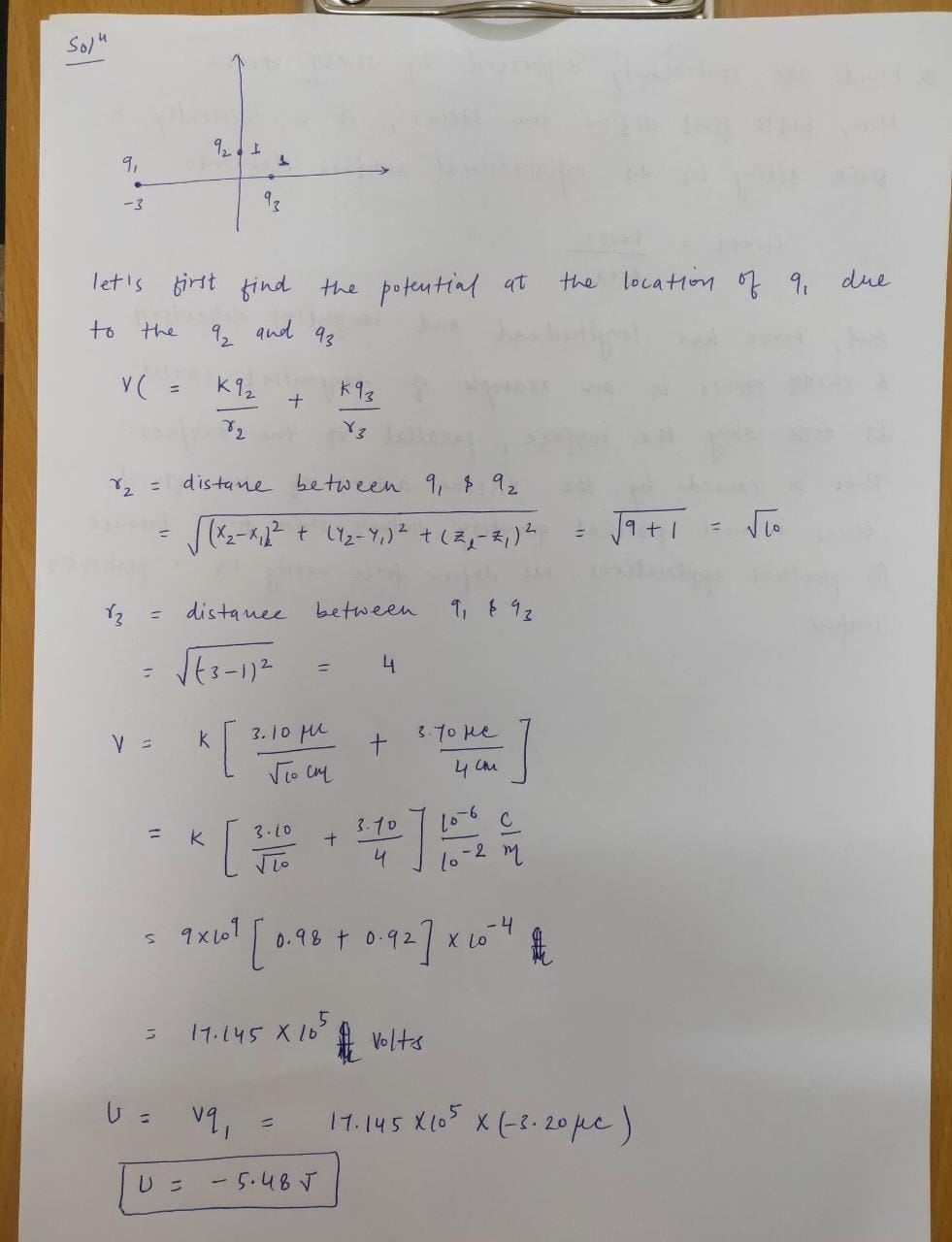9. Three point-like charges are placed at the following points on the x-y system coordinates (q1 is fixed at x = -3.00 cm, q2 is fixed at y = +1.00 cm, and q3 is fixed at x = +1.00 cm. Find the electric potential energy of the charge q1. Let q1 = -3.20 µC, q; = +3.10 µC, and q3 = +3.70 µC. y(cm) +3 +2 +1 -1 -1 +2 +3 19.6of19 oof19 oof19 oof19 0of19.00, -2 19 0of19 oof199 ooft oof19 oof oof19 oof19 oof19 oof19 oof 9 oof19 o oof19 oof19
9. Three point-like charges are placed at the following points on the x-y system coordinates (q1 is fixed at x = -3.00 cm, q2 is fixed at y = +1.00 cm, and q3 is fixed at x = +1.00 cm. Find the electric potential energy of the charge q1. Let q1 = -3.20 µC, q; = +3.10 µC, and q3 = +3.70 µC. y(cm) +3 +2 +1 -1 -1 +2 +3 19.6of19 oof19 oof19 oof19 0of19.00, -2 19 0of19 oof199 ooft oof19 oof oof19 oof19 oof19 oof19 oof 9 oof19 o oof19 oof19
Related questions
Question

Transcribed Image Text:9. Three point-like charges are placed at the following points on the x-y system coordinates (q1 is fixed at x = -3.00 cm, q2 is
fixed at y = +1.00 cm, and q3 is fixed at x = +1.00 cm. Find the electric potential energy of the charge q1. Let q1 = -3.20 µC, q2
= +3.10 µC, and q3 = +3.70 µC.
y(cm)
+3
+2
+1
-1
-1
+2
+3
-2
oof19 oof19
Cof19
oof19 0of19
Expert Solution
Step 1

Trending now
This is a popular solution!
Step by step
Solved in 2 steps with 1 images
